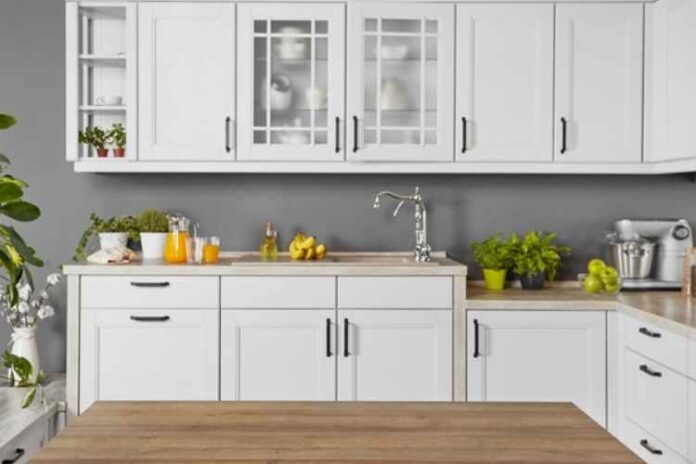The demand for kitchen cabinets is expected to rise to $17.3 billion by 2023. The high demand comes as more individuals realize the unmatched benefits of quality kitchen cabinets to increase storage and improve your space’s curb appeal.
However, it takes quality cabinet material to enjoy the outlined benefits, enhance the functionality of the cabinets, and save your money. How do you choose the best material for kitchen cabinets? Read on to understand the different available types, pros, and cons of each.
Poly-Vinyl Chloride
Abbreviated as PVC, polyvinyl chloride is made of composite plastic sheets to give the material a tough finish. With this, PVC does not require substrate for installation. Besides, PVC is super affordable and easy to install.
The material is both water and oil-proof, making it the best material for kitchen cabinets. Furthermore, you have a variety of colors and grains to choose from, depending on your kitchen style.
The primary drawback of PVC for kitchen cabinets is that it’s not fire-resistant and may change its color over time. Also, due to the plastic properties of poly-vinyl chloride, the material softens over time.
Solid Wood
Thanks to its versatility, solid wood is most property owners’ go-to cabinet material. Moreover, solid wood is renewable and toxic, hence one of the best kitchen cabinet materials.
You have a range of wood types to choose from, including teak, marine, Sheesham, to mention a few. Furthermore, solid wood cabinets suit modern and traditional kitchens and are easy to clean.
The main drawbacks of solid wood are that it requires high maintenance levels, and a sudden change in humidity levels could damage the core of the material.
Wooden Veneers
Wood veneers are sheets of solid wood placed overlaminates or other composite materials. The cabinet material features different colors and textures that are achieved through staining and polishing, making it one of the preferred materials for cabinets.
Although wood veneer is a solid wood and laminates combination, it offers you a similar feel and beauty to solid wood. Wood veneer is more affordable and sustainable than solid wood. Even better, the material can be treated to give different finishes, such as high-gloss, semi-gloss, and matte.
On the downside, wood veneer loses its color and shine after prolonged exposure to natural light. The material requires regular polishing, and it’s not scratch-resistant.
Laminates
Laminates are among the common kitchen cabinet material options, thanks to their ability to resist damage and infestations. This material is made of plastic resin, a layer of printed paper, and an overlay of sturdy plastic film, which explains the material’s durability.
The most outstanding feature about laminate is that it’s resistant to fading. Therefore, it does not require regular polishing to maintain its shine. Moreover, the material is coated with a thin plastic layer, making it resistant to moisture.
Laminate has some downsides too. For starters, it demands a lengthy installation process. And if not installed properly, the edges are prone to peeling off. Also, the material is non-renewable and may emit harmful greenhouse gases.
Improve Your Kitchen Functionality With High-Quality Cabinet Material
Now that you understand the pros and cons of different kitchen cabinet materials, you are better positioned to select the best. Pay attention to your budget and the quality of the cabinet material to help you make an informed decision.
Keep checking our blogs for more helpful content.


